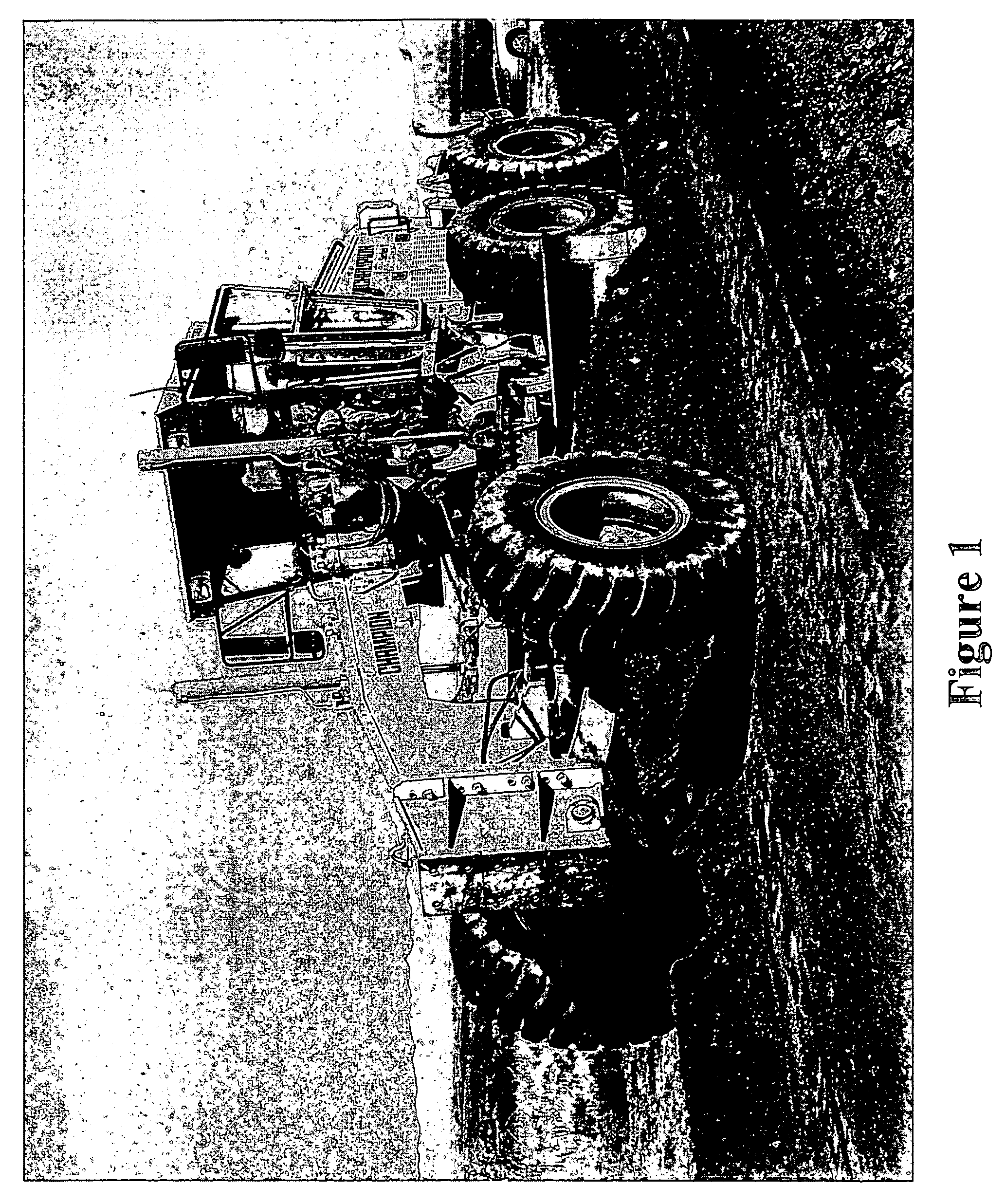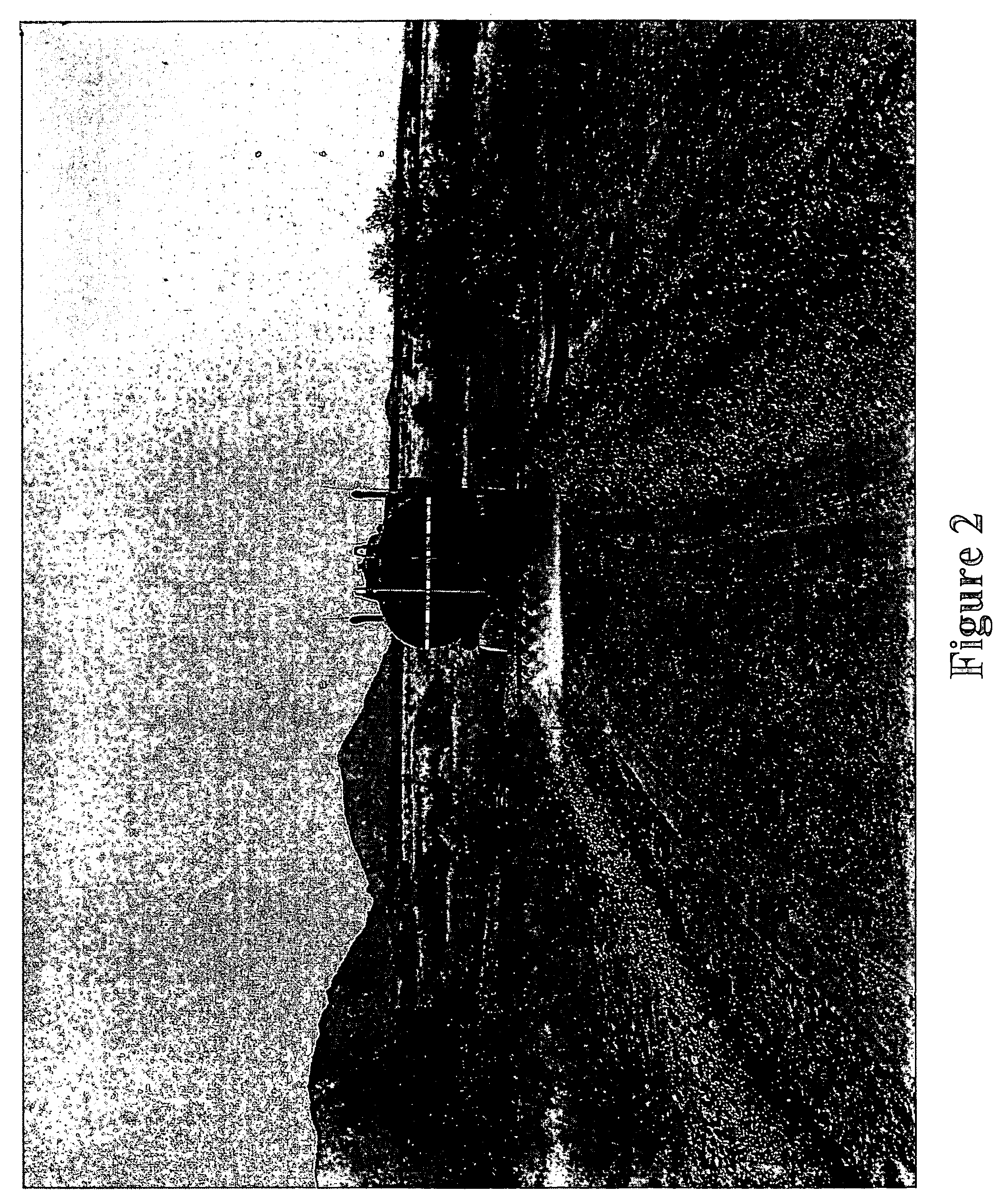Methods and compositions for dust and erosion control
a technology of compositions and dust, applied in the direction of other chemical processes, ways, applications, etc., can solve the problems of waste of water resources, dust generation, and very limited duration of methods, and achieve the effect of reducing the number of methods
- Summary
- Abstract
- Description
- Claims
- Application Information
AI Technical Summary
Benefits of technology
Problems solved by technology
Method used
Image
Examples
example 1
[0091]An experimental test to determine the effectiveness of a Caliber® blend as a dust suppressing, soil stabilization, and erosion controlling agent was performed by the Federal Highway Administration beginning on Jul. 27, 2002 in Tucson, Ariz. The description of the Caliberg® corn product is set forth in U.S. Pat. No. 6,468,442 and is incorporated by reference herein. Five other compositions were tested in addition to the Caliber® blend. The six compositions tested were as follows:
[0092]Caliber® / magnesium chloride blend (20% / 80% respectively)
[0093]Soil Sement™
[0094]Permazyme™
[0095]lignin concentrate
[0097]lignin / magnesium chloride blend (20% / 80% respectively)
[0098]A dirt road was bladed to form windrows on each side. Each composition was then sprayed on a different section of the dirt road, followed by a lift of base being bladed across and repeated until all base was distributed.
[0099]Two lighter applications of each composition were then applied on top of...
example 2
[0101]DC-1000 and DC-2000 are a blend of the Caliber® corn product (U.S. Pat. No. 6,468,442 B2) and 30% MgCl2. The DC products adhesive properties, combined with the hygroscopic nature of MgCl2, enhances the road base by increasing the stability and retaining the fine soil particles. The application rates are varied depending on the road base to which the composition is being applied.
[0102]DC-1000 Typical Properties:
[0103]Dissolved Solids: 30%–33%
[0104]MgCl2: 27%±1.0%
[0105]Carbohydrates: 5.2%–5.8%
[0106]Specific Gravity: 1.30±0.02
[0107]pH: 6.0–8.0
[0108]Solubility: >98%
[0109]Appearance: translucent tan
[0110]Odor: none
[0111]DC-2000 Typical Properties:
[0112]Dissolved Solids: 35%–37%
[0113]MgCl2: 24%±1.0%
[0114]Carbohydrates: 11%–13%
[0115]Specific Gravity: 1.31±0.02
[0116]pH: 6.0–8.0
[0117]Solubility: >98%
[0118]Appearance: translucent tan
[0119]Odor: none
[0120]The following is a recommended application procedure for applying DC-1000 or DC-2000 to a dirt or gravel road surface:
[0121]1) Pre-wet...
example 3
[0140]In military desert bases, it is desired to provide roadways, helicopter landing pads, and other useful surfaces on the fine, dry, sandy soil that are compacted and have greatly reduced dust generating capacities. A composition comprising 50% by weight on a dry basis of a sugar solid is applied to a sandy soil surface in an area that is plowed flat for use as a helicopter landing pad. 1 gallon per square yard is applied to the surface and allowed to penetrate fully. A second application of 1 gallon per square yard is applied to the surface and allowed to penetrate fully. If desired, more applications may be applied until the desired amount of surface compactness and dust suppression is achieved.
PUM
| Property | Measurement | Unit |
|---|---|---|
| weight | aaaaa | aaaaa |
| hygroscopic | aaaaa | aaaaa |
| area | aaaaa | aaaaa |
Abstract
Description
Claims
Application Information
 Login to View More
Login to View More - R&D
- Intellectual Property
- Life Sciences
- Materials
- Tech Scout
- Unparalleled Data Quality
- Higher Quality Content
- 60% Fewer Hallucinations
Browse by: Latest US Patents, China's latest patents, Technical Efficacy Thesaurus, Application Domain, Technology Topic, Popular Technical Reports.
© 2025 PatSnap. All rights reserved.Legal|Privacy policy|Modern Slavery Act Transparency Statement|Sitemap|About US| Contact US: help@patsnap.com



